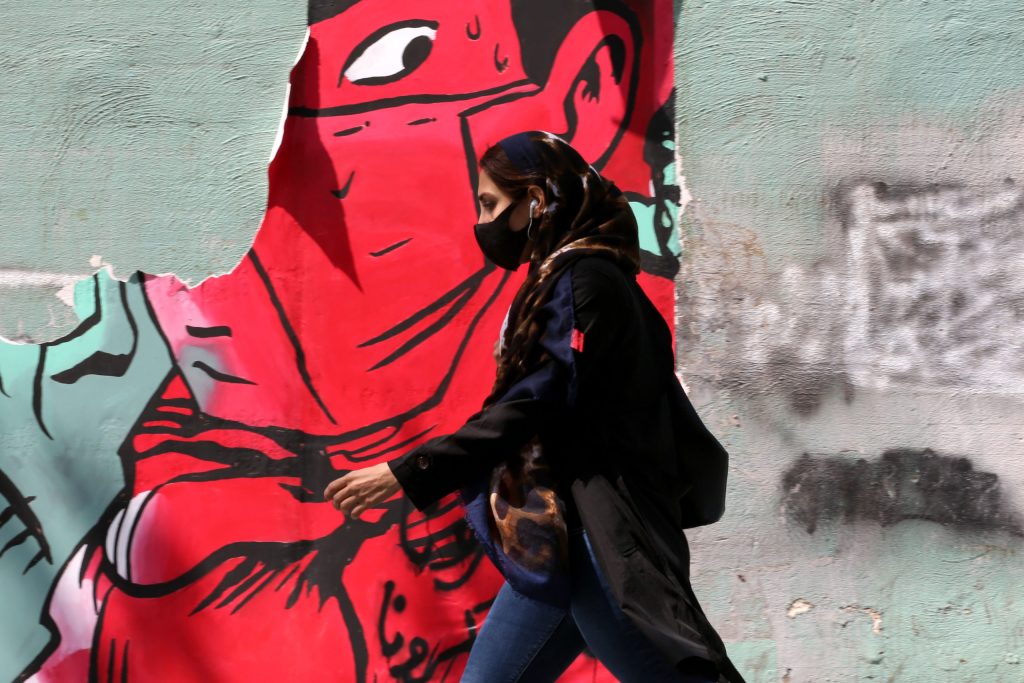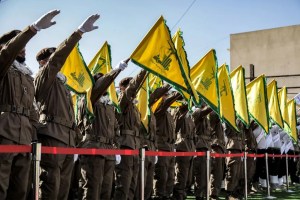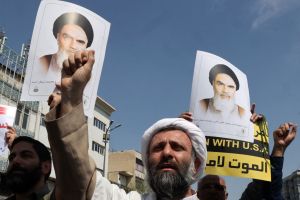If Iran has performed one role in the time of coronavirus it’s been as a harbinger of things to come. Early in the year, when we in the West were still blasé about the corona-thingy that would be ‘nothing more than the seasonal flu’, the regime was already having to deny reports that Iranians were being taken to hospital in their droves. The many flights arriving daily in Tehran from China were beginning to take their toll: as far back as January 28, three employees of the Chinese embassy were hospitalized with COVID-19 symptoms. People began to fall sick across the country. It was a state of affairs we would all come to know soon enough.
Iran then reluctantly locked down. It didn’t want to. The country is in severe economic crisis. According to an October 2019 World Bank report, the economy was expected to contract by 8.7 percent in 2019/20 due to a shrinking oil and gas sector output as the re-imposition of sanctions following the collapse of the Iran deal meant it could no longer sell its oil on international markets. Banking restrictions as well as new sanctions imposed on its petrochemicals, metals, mining, and maritime sectors meant that by the end of 2019/20 the World Bank estimated that the Iranian economy would be 90 percent of its previous size compared to 2017. And that was before coronavirus.
Then there is its political crisis. In late 2019, huge anti-regime demonstrations strafed the country due to plummeting standards of living. The regime got rattled and, according to Amnesty, machine-gunned protesters from rooftops and helicopters. It then hauled away the bodies and threatened the families of those killed to stop them speaking to the media. Then in January, following Washington’s droning of Qasem Soleimani, the Iranian military mistakenly shot down a commercial airliner with 176 people on board. Once more, the people came onto the streets. A crowd at Tehran’s Shahid Beheshti University chanted, ‘They tell us the lie that it is America, but our enemy is right here,’ and screamed that the Revolutionary Guards were ‘our Isis’.
All of this meant that a lockdown, which further crippled the economy and frustrated the people, needed to be lifted as soon as possible. The results have not been inspiring. New reported infections averaged more than 3,000 a day in the first week of June — reaching a high of 3,574 on June 4. Rouhani declared that the reason for the increase in infections was simple: ‘when more tests are done, then naturally more cases are identified,’ he said in true Trumpian style, before adding that the high number of recent cases ‘does not have a negative aspect to it, and people should not worry’. According to Prof Amir Afkhami, an expert in global health at George Washington University, ‘the consistent daily rise in infections, and a rise in deaths in the last two weeks supports fears in Iran that they are on the brink of second wave.’
Both China and South Korea — two countries that perhaps more than any others were thought to have the virus under control — are now experiencing second waves, too. Once more Iran leads the coronavirus vanguard. BBC Persian is now reporting that many of those critically ill from the virus in Tehran are under 30. Worryingly, this seems to be a trend. In Florida, the median age of residents testing positive for the virus has dropped to 35, down from 65 in March. In Texas, too, young people now account for the majority of new cases in several cities and towns.
[special_offer]
Rouhani is right to a degree: the increased infections among young people may be, in part, a reflection of more widely available testing. But it seems almost certain that it must also reflect an increase transmission of the virus.
This could be very bad news for Iran indeed. In 2012, around half the country was recorded as being under the age of 35. Iran’s famous ‘youth bulge’ — which merely reflects the wider trend in the Middle East – was thought by many to bode ill for Iran’s political stability. Young people need jobs: without them, they’ll go to protest in the street. And you can’t provide jobs when your economy is perpetually in crisis.
Now, however, Iranian demographics could mean the country faces an even greater health crisis. If coronavirus is indeed making greater headway among the young, then once more Iran will find itself in a vanguard that will only bring yet more misery to its perennially beleaguered people.
This article was originally published onThe Spectator’s UK website.


















